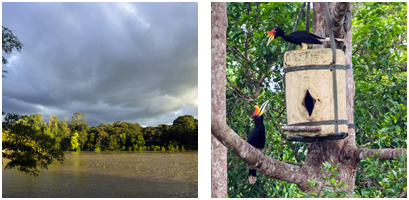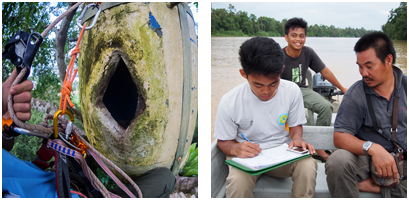What We Do?

“As habitat destruction and over-use of natural resources become more and more severe, we are faced with the immense task of saving that which still remains” ~ Prof. Dr. Pilai Poonswad, February 1998.

The Kinabatangan Hornbill Project
A collaborative effort was formed with ecology student Ravinder Kaur (University Malaya), Sabah Wildlife Department, Sabah Forestry and HUTAN, to conserve hornbills in Kinabatangan.
Nest boxes
One of the main focuses of this project is to provide suitable artificial nest boxes for hornbills in the area. In 2013, five artificial nests were erected in Kinabatangan Wildlife Reserve with the help of Chester Zoo and Beauval Zoo. These boxes were then monitored, to record hornbill species visits and to regulate the internal temperatures and humidity levels.

Nest restoration
The existing nests have changed since their discovery. The floors of the nests have sunken in too deep and entrances have become narrower. Hornbills are unable to remedy this problem and the nest cavities were abandoned. The team modified nests, to make them suitable again for nesting purposes. Sunken floors were remedied using soil and saw dust. Narrow entrances were made wider using a
chisel.
River monitoring
The number of hornbills encountered and their food preferences are documented during monthly river surveys. The surveys are conducted in the early morning along the Kinabatangan river, 8km upstream and 8km downstream.
Tree planting
We source hornbill preferred food plants and supply seeds/seedlings to our partners such as HUTAN/KOCP reforestation team, to help restore degraded forests.
Awareness programs
Websites such as this and posters are essential tools in this project, to convey the importance of hornbill conservation in Malaysia. It is also a great way to communicate with the general public about the most recent findings and activities, conducted in the Kinabatangan Wildllife Sanctuary.
Our Partners











